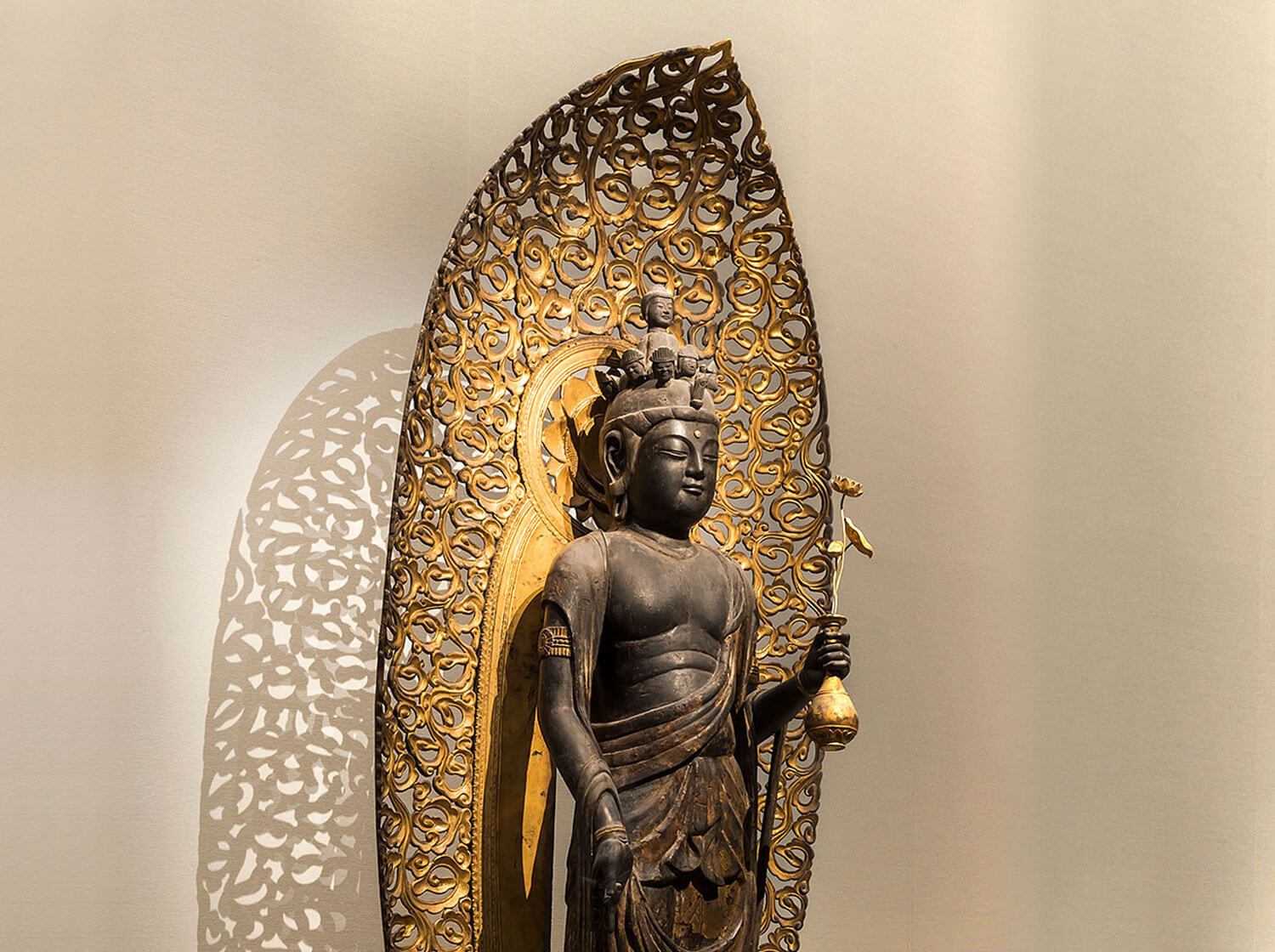Eleven-Headed Kannon

This Eleven-Headed Kannon (Sk. Avalokiteshvara) is the principal image of the Kannondo Hall, which was built around the twelfth century. Kannon is the bodhisattva of compassion and is often described as “the Buddhist goddess of mercy.” Although the statue was made in the eleventh century, it exhibits features of Buddhist statuary from the earlier Tenpyo culture (710–794), such as relatively broad shoulders and a slender waist. The statue may have been part of the original main hall on this site that predated the construction of the Phoenix Hall.
The 11 faces of Kannon are thought to reflect the 10 stages of the bodhisattva path toward enlightenment, with the eleventh face at the very top symbolizing buddhahood. Unlike other Eleven-Headed Kannon statues, this one does not have a rear-facing head with a smiling expression. Standing 167.2 centimeters tall, the statue was mostly carved from a single block of wood. It holds a water vase with a lotus flower in its left hand, while its right hand points downward, representing the granting of prayers. The detailed, leaf-shaped frame casts shadows that highlight the intricately carved features of the statue itself.

